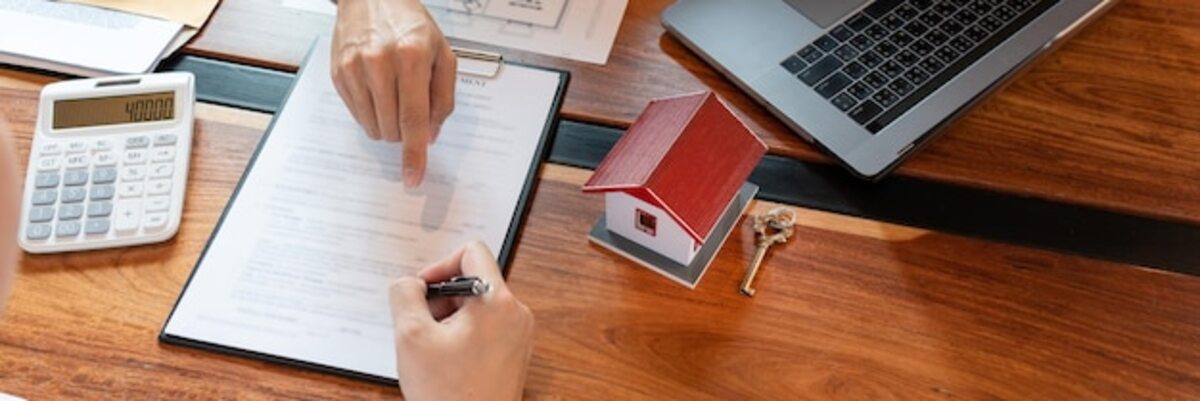How to organize the necessary documentation when ending the rental.

Organizing documentation at the end of a rental is crucial to avoid conflicts and ensure a smooth transition. In this article, I will guide you through the process of gathering and managing the necessary documents, from the inventory to the lease agreement. With a clear and practical approach, you will learn to keep everything in order and thus protect your rights as a tenant or landlord. Do not underestimate the importance of this step: good organization can save you time, effort, and potential inconveniences in the future. Let's get to it!
1. Importance of documentation at the end of the rental.
The documentation at the end of a rental is essential to ensure that both tenants and landlords can establish a clear and transparent closure of the contractual relationship. The lack of proper document management can lead to misunderstandings, disputes over the condition of the property, or even legal issues. Having all documents in order, such as the final inventory, the lease agreement, and any relevant communication, facilitates a fair assessment of compliance with the agreed conditions. This not only protects your rights but also allows you to present clear evidence in case of disagreements.
Additionally, having a good documentary organization at the end of a rental creates a trustful environment between both parties. A documented process provides clarity about security deposits and their potential return, as well as about pending repairs or existing damages to the property. This transparency is vital to avoid future conflicts and ensures that each party meets their responsibilities. Ultimately, the proper management of documentation when concluding a rental is an investment in peace of mind and long-term security for both tenants and landlords.
2. Essential checklist for contract termination
To ensure a smooth rental exit, it is essential to have a checklist that helps you gather all the necessary documents. This list should include the original lease agreement, which specifies the agreed conditions and any relevant clauses that may affect the return of your deposit. Additionally, make sure to include copies of important communications between you and the landlord, such as emails or messages regarding repairs made or issues reported during your stay. Having all this on hand will facilitate the resolution of any disputes that may arise at the end of the contract.
Another key aspect of your checklist is the inventory of the property’s condition at the time of your entry and exit. Comparing these documents will allow you to highlight any changes or damages that may have occurred during your time as a tenant. Don't forget to include recent photographs of the current state of the place, as these can serve as visual evidence in case of disagreements regarding the return of the deposit. Finally, make a list of any outstanding additional expenses, such as utilities or community fees, to ensure that everything is in order before handing over the keys and closing this chapter in your life.
3. How to conduct an effective final inventory
To conduct an effective final inventory, it is essential to carry out a thorough review of each space and element of the property. Start by walking through each room, noting the condition of furniture, appliances, and any other items that are part of the rental. Take photographs as visual evidence; this will not only help you demonstrate the original condition of the place but will also facilitate the resolution of any potential disputes with the landlord. Be sure to detail any existing wear or damage, as well as the conditions in which the items included in the contract were delivered.
Once you have completed your initial inventory and gathered all relevant documentation, it is advisable to create a final document that summarizes your findings. This should include a detailed list of the inspected items along with their respective conditions. Present this report to the owner or manager of the property before the official handover of keys. Clear and open communication during this process is key; consider scheduling a meeting to review the inventory together and resolve any discrepancies in real time. This will ensure a smooth and uncomplicated exit, protecting your rights as a tenant while you close this chapter.
4. Documents you should request from the owner
At the end of a rental, it is essential to request certain documents from the owner that will serve as support for the rental relationship and ensure the proper return of your deposit. Among these documents is the final inventory statement, which reflects the conditions in which the property was delivered. This document should be compared with the initial inventory you signed when entering the property to avoid misunderstandings about possible damages or missing items. Additionally, make sure to request a receipt for the payment of the last month and any other outstanding expenses, as this will help you maintain a clear record and avoid future claims. Another important aspect is to request a letter of termination of the lease agreement, in which both parties confirm that they have fulfilled all corresponding obligations and that there are no further pending commitments. This document can be useful if a discrepancy arises regarding the terms of the agreement or if you need to demonstrate to third parties that you have vacated the property as agreed. Remember to keep copies of all these documents; this way, you will be well-prepared for any eventuality and can make a smoother transition to your next home.
5. Process for returning the deposit: what do you need?
The process of returning the deposit is one of the most important aspects when ending a rental. To ensure a hassle-free return, you should first review the lease agreement and understand the specific conditions related to the deposit. Make sure there are no damages to the property beyond normal wear and tear, and document any repairs or cleaning needed before the final handover. Having photographs that show the condition of the property can be a great help if there is any disagreement about the property's state.
Once you have verified that everything is in order, it is advisable to prepare a detailed list of the objects and areas checked, along with their respective observations. Communicate to your landlord or real estate agent your intentions to request the return of the deposit well in advance and ask for a written receipt at the time of handing over the keys. If issues or discrepancies arise regarding the return, having all this organized documentation will allow you to defend your position and facilitate a quicker resolution of the conflict.
6. Resolution of common documentary disputes
The resolution of common documentary disputes is an essential aspect when ending a rental, as it can prevent misunderstandings and conflicts between tenants and landlords. One of the documents most likely to generate discrepancies is the inventory of the property's condition. It is advisable for both parties to conduct a joint inspection of the property before the handover, documenting any damage or wear through photographs and detailed descriptions. This way, a clear record is established that can be referenced in case of disagreements regarding the refund of the security deposit.
Another critical point in dispute resolution is the conditions stipulated in the lease agreement. Both tenants and landlords must be clear about what was initially signed; this includes terms regarding repairs, final cleaning, and financial responsibilities. If disagreements arise on these issues, referring to the contract can help clarify misunderstandings. Maintaining open and respectful communication during this process will facilitate peaceful resolution and avoid additional complications, thus ensuring a satisfactory conclusion for both parties involved.
7. Keeping copies: how long should you keep them?
Keeping copies of the rental-related documentation is a crucial step to safeguard your interests and avoid misunderstandings. It is advisable to keep all important documents, such as the lease agreement, payment receipts, communications with the landlord, and any inventory that was conducted at the beginning of the rental. The general rule is to retain these files for at least one year after the contract ends. This will allow you to have evidence in case of disputes regarding deposits or property conditions.
It is also helpful to organize these documents in a physical or digital folder, ensuring they are easily accessible when you need them. While one year may be sufficient for many cases, consider keeping copies for a longer time if your situation requires it, for example, if there have been major repairs or if you have had issues related to the rental. At the end of the day, having all the documentation well organized not only gives you peace of mind but also strengthens your position in future negotiations or legal situations.
8. The relevance of the property's condition in the documentation
The relevance of the property's condition in the documentation is a fundamental aspect that should not be overlooked when concluding a rental. A detailed report on the property's condition, including photographs and descriptions of any damage or wear, can be invaluable in case of disputes between tenants and landlords. This document serves as tangible evidence that supports the conditions under which the property was delivered, thus protecting the rights of both parties. Having clear and precise documentation of the property's condition minimizes the possibilities of misunderstandings and unjustified claims.
It is also advisable to conduct a final joint inspection between the tenant and the landlord before handing over the keys. This process not only facilitates the identification of potential issues but also allows for direct discussion of any concerns related to the security deposit. Documenting any agreements reached during this inspection in a signed document by both parties is an additional step that can prevent future conflicts. Ultimately, having clarity about the condition of the property at the end of a rental not only protects your investment but also fosters a more harmonious relationship between tenants and landlords.
9. Tips for a successful key handover
To ensure a successful key handover, it is essential to establish clear and open communication with the owner or the rental agency. Before the agreed date for the handover, make sure to notify any inconveniences you encountered during your stay in the property. This not only demonstrates your goodwill but also allows for addressing potential issues before they escalate into conflicts. Additionally, schedule an appointment for a final walkthrough of the property with the landlord; this will allow you to verify the condition of the place and ensure everything is in order before handing over the keys.
Another key aspect for an effective handover is to have all relevant documentation on hand. Make sure to bring the original lease agreement, as well as any inventory or list of repairs made during your occupancy. Document the condition of the property at the time of the handover with photographs; this will serve as backup in case of disagreements about possible damages or adjustments to the security deposit. Finally, remember to request a receipt for the handover of the keys and any other pertinent document that confirms the closure of the contract. By following these steps, you can enjoy a smooth and hassle-free transition to your next home.
10. Useful resources and templates related to lease termination
At the end of a rental, having useful resources and templates can greatly ease the process of organizing documentation. There are numerous online tools that offer formats and examples of essential documents, such as notification letters, checklists for property handover, and even templates for deposit return. These templates not only save time but also ensure that all necessary information is included and presented professionally, which is crucial to avoid misunderstandings with the landlord or tenant.
In addition, many organizations and specialized housing websites offer comprehensive guides on the rights and obligations of both tenants and landlords. By using these resources, you can better inform yourself about local regulations related to renting and ensure that you meet all legal requirements when ending your contract. Having access to this information will allow you to handle any eventuality with confidence and clarity, thus ensuring a smooth transition to your next home or real estate project.



